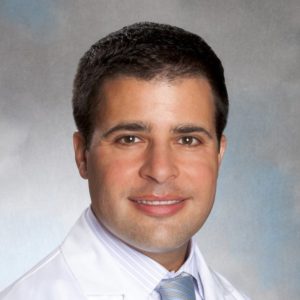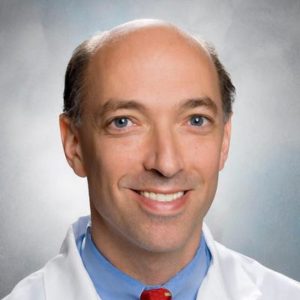
Joseph Loscalzo, M.D., Ph.D.
Medical Need
Complex diseases are driven by multiple genetic loci interacting with each other and with environmental factors. Rather than utilizing the conventional statistical genetics approach to complex traits in which associations are quantitated for each potential locus and interaction terms determined, we believe that precision medicine mandates a more rigorous quantitative approach that incorporates a causal systems and network analysis, denoted network medicine.
Current Research
- We are using the comprehensive protein-protein interactome network as a basis for identifying clusters of interacting proteins that comprise disease modules for the majority of human diseases.
- We are exploring these disease modules to define overlapping pathways that are involved in different diseases.
- We are identifying drug targets within these disease modules that may also map to diseases for which the drug was not intended in order to develop a rational approach to drug repurposing.
More at: Loscalzo Lab

Rajat Gupta, M.D.
Medical Need
Dr. Gupta is the recipient of the Sperling Family Fellowship 2019.
Atherosclerosis is the common cause of coronary artery disease, stroke and peripheral vascular disease. These three diseases combined cause over half the deaths and disabilities throughout the world. Coronary artery disease accounts for over 366,000 deaths annually in the United States and is the leading cause of death among both men and women. Stroke and peripheral vascular disease are related vascular conditions with rising rates despite effective therapies to lower cholesterol.
Current Research
Dr. Gupta’s work is focused on identifying and characterizing Circulating Endothelial Progenitor Cells (CEPCs) which are thought to provide protection and repair the damage to the blood vessels caused by atherosclerosis. The goal of this research is to create a “blood biopsy” for vascular disease which allows to measure blood levels of CEPCs for prevention, diagnosis and treatment of vascular disease.

Alireza Haghighi, M.D., Ph.D.
Medical Need
Genetic diseases affect millions of patients worldwide, and are often life-threatening or chronically debilitating. Early molecular diagnosis and individualized management that targets the underlying pathophysiology can improve the quality of life for many of these patients and reduce medical costs: i.e., Precision Medicine. However, only about half of the clinically described genetic diseases have a clearly identified genetic cause.
Current Research
-
We use genome sequencing, functional genomics and disease modeling for the following clinical research projects.
- Genetics of Human Heart Disease: We are studying the genetic etiologies of unexplained cardiomyopathy (hypertrophic and dilated) with a focus on the role of non-coding variants. The non-ischemic cardiomyopathies are a group of cardiac disorders that frequently cause heart failure and death and are now recognized with increasing frequency.
- Recessive Genetic Diseases: We characterize recessive genetic diseases and discover novel gene(/variant)–disease relationships, with a focus on Middle Eastern and Arab populations. In the Middle East (ME), recessive genetic diseases are one of the leading causes (up to 43%) of infant mortality.
- Implementation of Genomic Medicine: We have developed an integrated genomic medicine program (Haghighi et al, Genom. Med., 2018) to implement genomic medicine at BWH and Harvard Medical School. As the Lead Clinical Molecular Geneticist of Brigham Genomic Medicine (BGM), my focus is to discover genetic causes of undiagnosed monogenic diseases in order to devise improved or novel diagnostics or treatments.
Our efforts contribute to scaling precision medicine to meet the needs of patients. In addition, genes responsible for large effects in genetic disorders may contribute moderate effects to more common forms of the same or related disease phenotypes.

Bradley Maron, M.D.
Medical Need
The Maron Cardiovascular and Pulmonary Hypertension Research Laboratory uses systems biology and network medicine to characterize the molecular mechanisms and pathophysiology of cardiopulmonary diseases. Pulmonary vascular disease is a complex and heterogenous collection of disorders that require nuanced approaches to understand and characterize. In this field, there is an emerging need, for example, to couple pathobiology with clinical phenotype on a individual patient level. Developing this strategy, in turn, marks the early phases of precision medicine for patients with pulmonary arterial hypertension, right heart failure, exercise intolerance, and other conditions defined by dysfunction of the lung-pulmonary vascular-right ventricular circuit.
Current Research
- We have developed a novel fibrosome and analyzed the effect of pro-fibrotic factors implicated in the pathogenesis of pulmonary arterial hypertension, including the salt hormone aldosterone, on signaling in this protein-protein network.
- Our fibrosome work has identified a series of novel proteins and derivative treatment targets to decrease pulmonary arteriole fibrosis, which is an important cause of adverse outcome in affected patients.
- Network medicine was used to develop a novel strategy for classifying and risk-stratifying patients with exercise intolerance.
- Our network medicine in exercise intolerance project resulted in a validated risk calculator to provide point of care estimates of hospitalization based on clinical variables not previously used together in clinical practice.

Soumya Raychaudhuri, M.D., Ph.D.
Medical Need
The immune system, and its regulation is the center to a wide range of diseases including autoimmune diseases, cancer, infectious, and even metabolic diseases. Dysregulation of CD4+ T cells leads to greater risk of rheumatoid arthritis, type I diabetes, and tuberculosis. Each of these diseases affect different populations worldwide – but confer disability, morbidity, and mortality even with state of the art treatment.
Current Research
- We are devising computational and immunological tools to query the immune system to assess the health of CD4+ T cell subpopulations and functional response.
- We are using human genetics and genomics to define CD4+ T cell factors associated with disease.
- We are using the same tools to define dysfunction of these cell population in health and disease in order to define early stage diagnostics and markers of treatment response.
More at: Immunogenomics at HMS/

Christian T. Ruff, M.D.
Medical Need
We are interested in understanding cardiovascular disease and its risk factors. To make progress in the field we are working to enhance our ability to predict an individual’s risk for cardiovascular disease; studying the complex interactions between an individual’s disease and response to various treatment options and identifying patients most likely to benefit from novel therapies.
Current Research
We have established several collaborations to develop innovative approaches:
- Collaboration with IBM Watson to train their life sciences cognitive computing platform to correctly identify cardiovascular proteins involved in atherosclerosis and heart failure. Second stage of the project is to use the platform to evaluate whether machine learning algorithms based on Watson’s annotated scientific corpus can correctly predict proteins associated with cardiovascular disease. These proteins were measured as part of a large trial of secondary prevention in patients with a prior myocardial infarction that was run on a state of the art high-throughput apatamer-based array.
- Collaboration with the Department of Biomedical Informatics on a large atrial fibrillation trial to develop a predictive model that enables selection of optimal anticoagulant strategy.

Daniel H. Solomon, M.D., M.P.H.
Medical Need
The TARGET Trial is an NIH/NIAMS funded trial that aims to determine which treatments for rheumatoid arthritis reduced cardiovascular risk. Patients with rheumatoid arthritis suffer a 50% increase in cardiovascular risk but there is little known about which treatments are best to reduce this risk. This trial uses FDG PET/CT scanning to assess cardiovascular risk and is collecting a large group of biomarkers to help subset patients into various risk groups. As well, two different randomized treatment arms will facilitate detailed analyses of which patients respond best to different treatments for rheumatoid arthritis.
Current Research
- http://www.targetra.org/
- Which treatments for rheumatoid arthritis best reduce the risk of cardiovascular disease?
- Which subgroups of patients with rheumatoid arthritis respond best to different treatment strategies?
- Do biomarkers help identify rheumatoid arthritis patients with different levels of cardiovascular risk?

Onuralp Söylemez, Ph.D.
Medical Need
Rare and undiagnosed diseases of plausible genetic etiology represent the forefront and essence of precision medicine. The constantly arising challenge in the genetic analysis of these cases is whether these rare diseases are caused by individual mutations of very large effects mappable within the paradigm of Mendelian genetics. The additional complexity is due to occasional presence of family members with a much milder form of the same condition, and it is unclear whether the presentation in family members is related to the extreme phenotype of the patient. Currently, we lack a quantitative framework to address this issue.
Current Research
We analyze unique cases of rare genetic diseases with the overlapping goals to diagnose patients without definitive medical diagnosis, provide clinical recommendations and discover functional roles of poorly characterized human genes.
We are developing a statistical genetics modeling framework to analyze the genetic architecture of extreme phenotypes using large-scale population genetic simulations and clinical sequencing data from patients with unusual presentation.
We are applying our statistical framework as a pilot study to clinical whole exome sequencing data from individuals with extreme levels of risk factors for cardiovascular disease.


